It’s natural for people to have animal phobias, especially with all these movies about shark attacks or killer gorillas. But those are just movies; in real life, it’s usually the smaller critters you need to be afraid of. While dangerous creatures come in various shapes and sizes, it’s mostly the tiny animals that pack a deadly punch.
Some even cause large numbers of human fatalities when touched. As a result, researchers suggest never touching or interacting with unknown wildlife as it may cost you your life.
But most of these dangerous animals prefer living peacefully and would generally never hurt a human unless provoked. However, for peace of mind, get familiar with these 11 tiny animals that pack a deadly punch.
The Tiny and Deadly Cone Snail
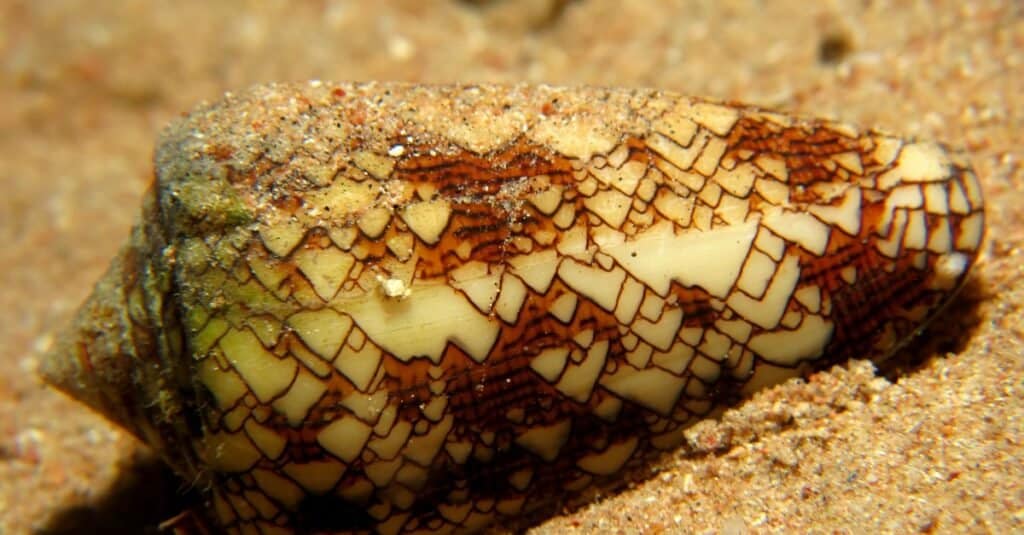
iStock.com/lilithlita
When you think about deadly marine animals, a great white shark or killer whale immediately comes to mind. But it’s the ocean’s tiniest members that you need to fear. The cone snail might be beautiful, but it hides a terrible secret under its shell.
Cone snails use venom on their prey before they devour them. But their toxic poison doesn’t just affect animals; it can also be fatal to humans.
Many people go diving in the crystal-clear waters of the Pacific Ocean and find a beautiful shell to take home. Unfortunately, they are met with a deadly sting when they pick up this shell. While most people survive without permanent damage, few unlucky individuals succumb to the poison.
People often don’t even notice that a cone snail bit them because their venom contains a paralytic, so they won’t go to the hospital and eventually pass away.
Around 700 specie of cones and snails exist, but not all have venom potent enough to kill humans. Species like the geography cone (Conus geographus) are deadly and contain over 100 toxins in their tiny bodies.
These tiny but deadly animals are often called cigarette snails because if stung by one, you only have the time to smoke one cigarette before passing away.
The Tiny Golden Poison Dart Frog Packs a Deadly Punch
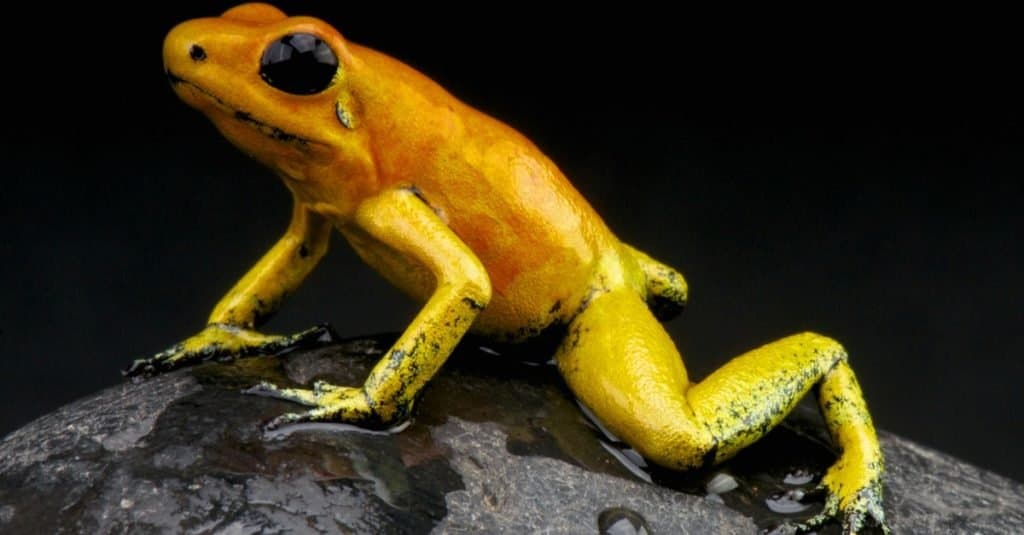
reptiles4all/Shutterstock.com
There are about 170 species of poison dart frogs, but only 3 are dangerous to humans. This includes the golden poison dart frog, the deadliest of the three. In fact, their poison is 20 times more potent than other species of dart frogs.
Their poison is so toxic to humans that it only takes an amount equal to 2 – 3 grains of table salt to kill a fully grown adult man. That is why golden dart frogs are often called terrible frogs.
Their poison quickly attacks the muscles and nerves in the human body, ultimately, the body starts to shut down, and respiratory and muscular paralysis leads to death.
These frogs are native to Colombia but can be found all over the Americas.
Interestingly, Colombian natives have found a good use for the frog’s poison. They collect golden poison dart frogs and use their toxins to coat their hunting arrows to paralyze their prey.
Their poison is also used for other purposes. Medical researchers are looking for ways to incorporate the golden poison into medicine, which has proved successful.
Research has shown that this poison is extremely valuable in the study of:
- Muscle relaxants
- Anesthetic
- Cardiac Stimulants
- Medicine to help with rapid or irregular heartbeats
The Tsetse Fly is Tiny but Deadly
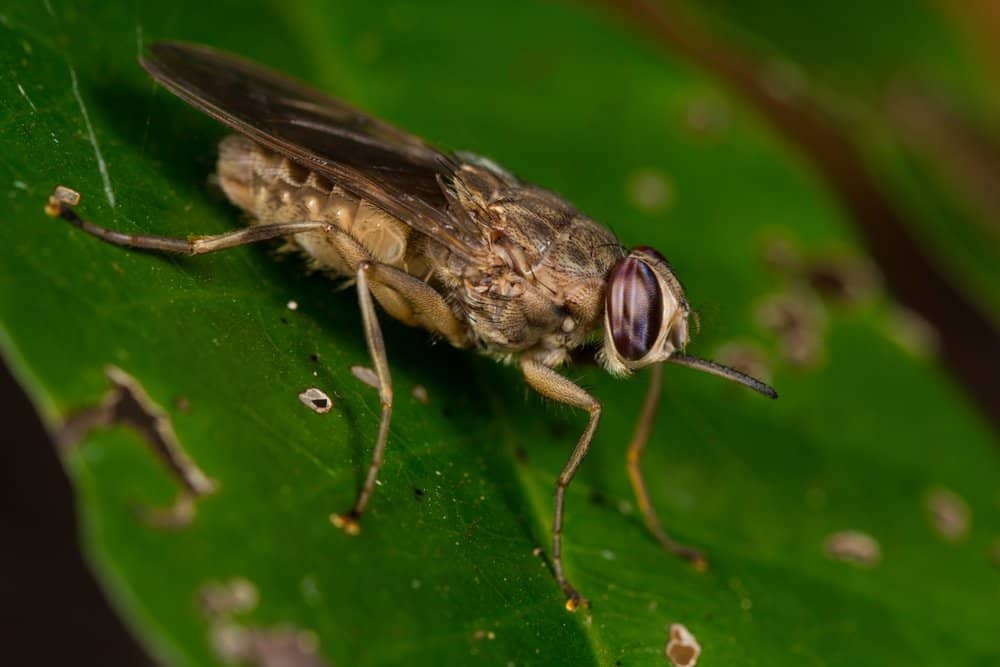
Jaco Visser/Shutterstock.com
Tsetse flies are the troublemakers of Central Africa. These insects transmit the African animal trypanosomiasis disease to animals, also referred to as nagana.
In addition, they often carry another illness to humans called sleeping sickness or human African trypanosomiasis. Trypanosomes and protozoa are agents that live inside the tsetse fly.
The Tsetse flies are so problematic that some regions of Africa are entirely uninhabitable. Around 35 species and subspecies of the tsetse fly are in sub-Saharan Africa.
Tsetse flies have an insatiable appetite and can suck up their weight in blood, making them tiny but deadly animals. These insects suck blood from the muscle tissue of people and animals to survive. When feeding on animals and people, they pick up pathogens from infected hosts and pass them on to other hosts.
While these flies are extremely dangerous, they have several unique adaptations. For example, unlike other insects that lay eggs, the tsetse flies suckle their young in the uterus and give birth to live offspring.
This adaptation is called adenotrophic viviparity, and not many insects display this behavior. All the species belonging to the superfamily Hippoboscoidea prefer this type of gestation.
Tiny Deadly Animals: Mosquitos

Surachai Pung/Shutterstock.com
Mosquitos are notorious for their malaria-distributing abilities and are amongst the deadliest animals in the world. However, they don’t just carry malaria; mosquitos also carry several parasites, viruses, and roundworms that are potentially dangerous to humans. Sadly, the general public doesn’t seem aware of how life-threatening these insects can be.
Luckily, most people can prevent infection from mosquito-borne diseases. Still, unfortunately, these illnesses often affect those with high poverty levels and compromised immune systems. Controlling and preventing these diseases is, therefore, difficult.
So, if you travel to an area plagued by mosquitos, ensure your safety by applying repellents or sleeping under a mosquito net. In addition, there is medication available to prevent malaria transmission during trips in certain areas.
The first sign of malaria infection is a high fever. If you experience this after travelling, visit your trusted healthcare provider as soon as possible.
The Stonefish Might be Tiny, But it is Deadly
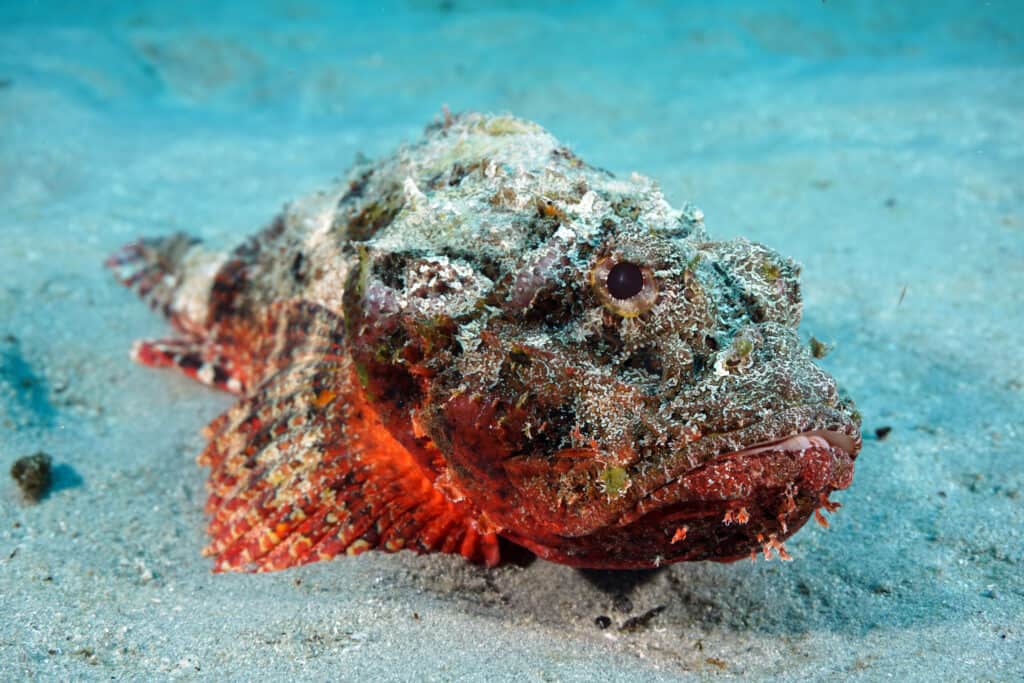
Matt9122/Shutterstock.com
When you think of toxic sea creatures, jellyfish or blue-ringed octopuses come to mind, but the stonefish is actually the most venomous animal in the ocean. Stonefish are part of Scorpaeniformes, an order which includes members like lumpsuckers, lionfish, and sculpins.
Stonefish can be found in the Indo-Pacific region and inhabit the rocky or muddy bottoms of the ocean floor. Their bodies are textured, and their coloring helps them blend into the surrounding rocks and coral, where they wait for unsuspecting prey to pass. Once the prey gets close enough, the stonefish attacks.
The 13 spines on their backs that secrete venom when under pressure make stonefish dangerous to humans. If you somehow manage to step on one (which is highly likely because they look like rocks), its spines penetrate your foot and release a deadly poison.
The Mouse Spider
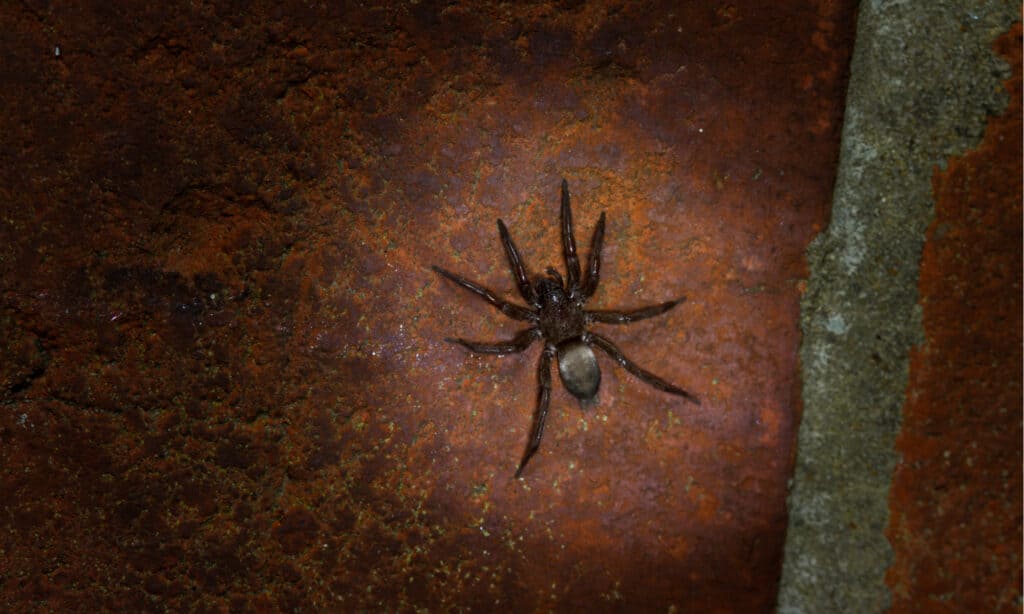
thatmacroguy/Shutterstock.com
Mouse spiders are members of the trapdoor family because they make vertical burrows, padded with silk, and a door at the nest’s entrance.
These tiny eight-legged creatures are highly aggressive and rear on their hind legs when threatened, assuming an attacking position. Although small, these spiders have a stocky build with big fangs that can cause a painful bite, which can be fatal.
These spiders are often mistaken for funnel web spiders because they look alike. While having some differences, their venoms are quite similar.
The Funnel web spiders and mouse spider bites can cause severe illness, especially in small children. However, male mouse spiders will only bite if provoked, and thus don’t really pose a threat to humans.
But if you are bitten by one of these tiny creatures, you should seek medical attention immediately!
The Tiny Blue-Ringed Octopus is Deadly
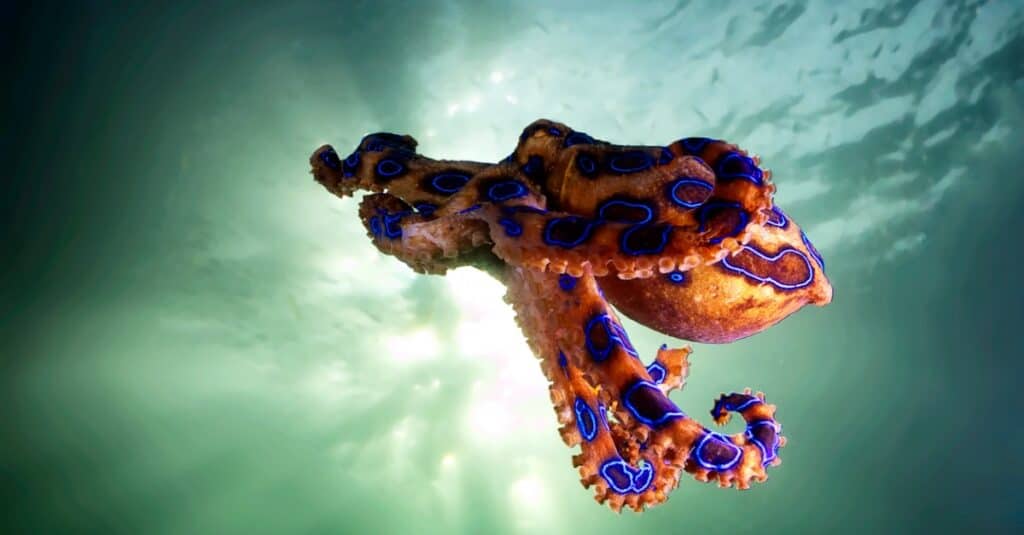
iStock.com/Subaqueosshutterbug
The blue-ringed octopus was named due to the bright blue rings they display under duress. These tiny cephalopods live in tide pools or shallow reefs in moderately tempered waters. When they are relaxed, they are gray or beige, and their rings aren’t visible to the naked eye.
These octopuses are small. They are only about the size of a golf ball, and their tentacles are around 3 to 4 inches long. Blue-ringed octopuses take refuge in cracks under rocks during the day, and at night they emerge to hunt small crabs, shrimp, and hermit crabs.
While these cephalopods have extremely toxic venom, they don’t make it themselves. Instead, blue-ringed octopuses use bacteria in the ocean, which they store in their salivary glands. This bacteria secretes a toxic substance called TTX (tetrodotoxin). When these octopuses attack their prey, they use their beak to penetrate and spit saliva into their victims.
This toxin transmitted through saliva paralyzes the prey allowing the blue ring octopus to feast. This toxin is so lethal that just 1 milligram can kill an adult human. Unfortunately, there is no antidote for this extremely potent venom. This makes the blue-ringed octopus tiny but deadly.
Deathstalker Scorpion
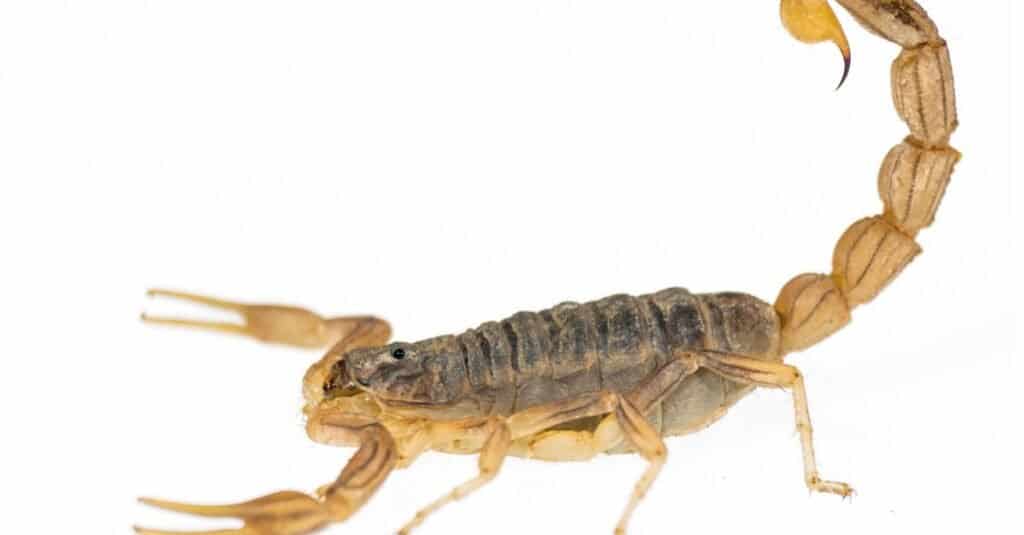
iStock.com/Javier Conejero
The deathstalker scorpion is also called the Palestinian yellow scorpion, one of the most terrifying species in the Buthidae family. This scorpion is very dangerous to humans and should be avoided at all costs!
If you want to avoid this arachnid completely. In that case, you need to stay out of Northern Africa, Asia, and the Middle East, specifically:
- Libya
- Mali
- Somalia
- Egypt
- Ethiopia
- Sudan
- Chad
- Algeria
- Niger
- Tunisia
- Iran
- Israel
- Lebanon
- Saudi Arabia
- United Arab Emirates
- Turkey
Their poison is not the run-of-the-mill toxin found in other scorpions. Instead, it consists of neurotoxins and large amounts of cardiotoxins, which cause problems like cardiovascular and respiratory dysfunction. These conditions can severely impact the body, especially if the person is sick or has an allergic reaction to the venom, and in some instances, fatal.
However, while the sting is excruciating, it does not usually kill healthy adults, but medical attention will be required.
While this all sounds morbid and scary, there is a silver lining. The deathstalker’s venom is now being used in medicine, particularly in treating cancer tumors in humans. In addition, some elements of the toxin have proved helpful against the effects of diabetes.
Red Widow Spider
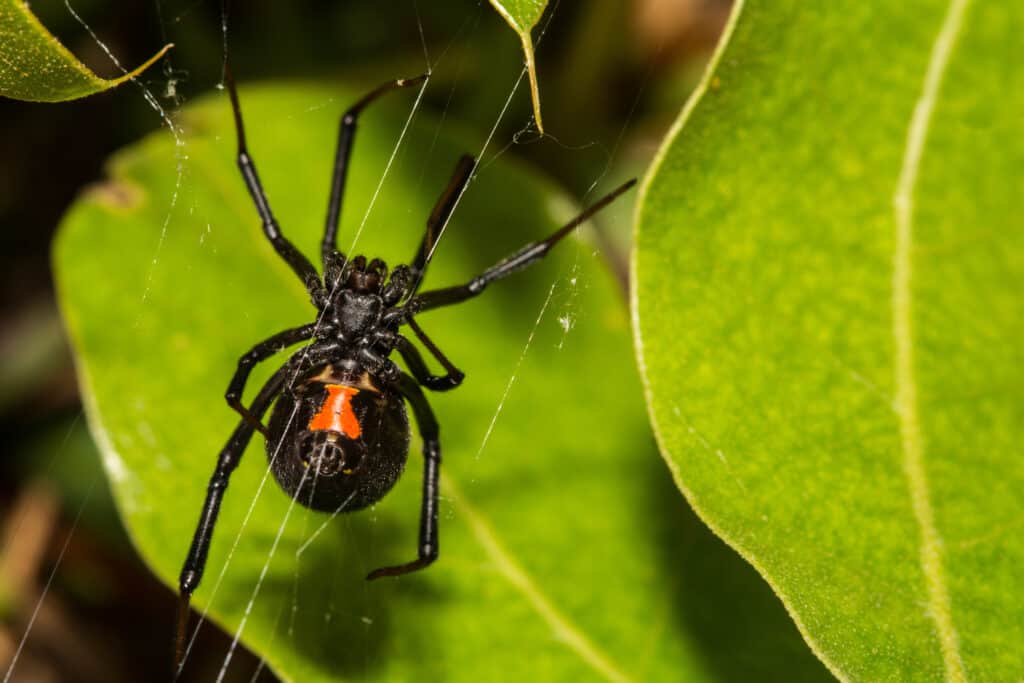
Jay Ondreicka/Shutterstock.com
The red widow spider is one of the scarce members of the black widow family, known for its highly venomous bites. These spiders are incredibly harmful to people. Their neurotoxic venom causes sustained muscle spasms instead of local tissue injuries.
The red widow spider’s toxin can be 10 to 25% more potent than a rattlesnake’s venom; however, they deliver less venom than the serpent, but they still classify as one of the tiniest deadly animals around. Luckily, most people recover from a red widow spider bite, but some fatalities have occurred in children and the elderly. While the puncture wounds are tiny, the symptoms are not; they include:
- High blood pressure
- Sweating
- Vomiting
- Respiratory muscle weakness
- Seizures
Victims usually complain of a stiff abdomen, with pain mimicking appendicitis. While symptoms last several days, the worst pain usually lasts for the first 8 to 12 hours. If bitten, immediately get to an emergency room where an anti-venom will be administered.
Irukandji Jellyfish
The Irukandji jellyfish might be minuscule, but it is one of the deadliest cnidarians in the ocean. People might dismiss their danger because of their size, but they can bring down a man with a single sting.
There is more than one variety of this box jellyfish, but they are among the tiniest and most toxic jellyfish in the world. Irukandji jellyfish inhabit the northern coastal waters of Australia.
These crafty creatures can shoot their stingers into their prey and infect them with symptoms known as Irukandji syndrome, a life-threatening condition.
There are around 16 species of Irukandji, including:
- Carukia barnesi
- Malo maxima
- Malo filipina
- Malo kingi
- Malo bella
As mentioned above, the Irukandji are tiny! They only grow between 0.2 to 0.98 inches, and their four tentacles are 0.4 to 0.40 inches long.
Their cuboidal bells are translucent and slightly narrow as they approach the apex. In addition, their body and tentacles are covered with stinging cells called nematocysts. Lastly, Irukandji have undeveloped transparent eyes on either side of their bell.
The Tiny but Deadly Flea
Fleas are small, wingless pests with flat bodies that are either dark brown or black in color. They have powerful claws at the bottom of their six legs, enabling them to hold onto a host.
In addition, their mouth parts are sharp to pierce the skin and feed on blood. Unfortunately, over 2500 flea species are on the planet, with 300 in the United States alone!
Interestingly, their hind legs are more robust and longer than the middle and front legs, which allows them to leap over 12 inches.
While flea bits hardly ever cause any long-lasting damage, hosts still experience mild annoyance and irritation for a few days. But it’s not their bite that you need to be afraid of; the disease they can spread makes them deadly animals.
Prevention
Fleas are more likely to attack your pet, but that doesn’t mean they steer clear of humans. So, the best way to prevent a flea infestation is by getting rid of every last one! Firstly, you must ensure there aren’t any fleas in your home by checking your pet’s head, back, belly, and ears. You must be thorough by parting the fur and examining the skin. If you find fleas, you can use these removal methods:
Flea Comb
Don’t use a regular comb because flea combs have teeth that are very close together. Before starting the process, have a warm bowl of soapy water at hand. Slowly start combing your pet’s hair; you will notice the fleas getting stuck between the teeth of the comb; catch them and drown them in the soapy water.
Flea Shampoo
- Affordable
- Extremely effective
- Targets adult fleas and their eggs
- Reduces the chance of reinfestation
- Also works on ticks and lice
After you have combed out most of the fleas, treat your pet to a nice bath. Apply the specially formulated flea shampoo, and massage thoroughly so it can spread to all the nooks and crannies. However, try not to get this shampoo in your dog’s eyes because it will burn.
Medicine
After combing and washing your pet, you still need to make 100% sure that all the fleas are dead. Administer flea medication, which can come in two forms, pills or topical ointments.
Wash All the Bedding
For the next few days, you will have to wash all the house bedding, including your own.
Vacuum
If you have carpets in your home, you will need a solid vacuum to clean all the surfaces; this includes any rugs, fabric, or furniture. Once you are done, empty the vacuum’s contents into a bag and seal it before discarding it.
Related Articles
- Top 10 Deadliest Animals in the World
- Top 10 Harmless animals in the World
- The 9 Most Dangerous Animals on Earth to Humans
The post Size Doesn’t Matter! These 11 Tiny Animals Still Pack a Deadly Punch appeared first on AZ Animals.
from Animal News, Facts, Rankings, and More! - AZ Animals https://ift.tt/JZLzdrc
